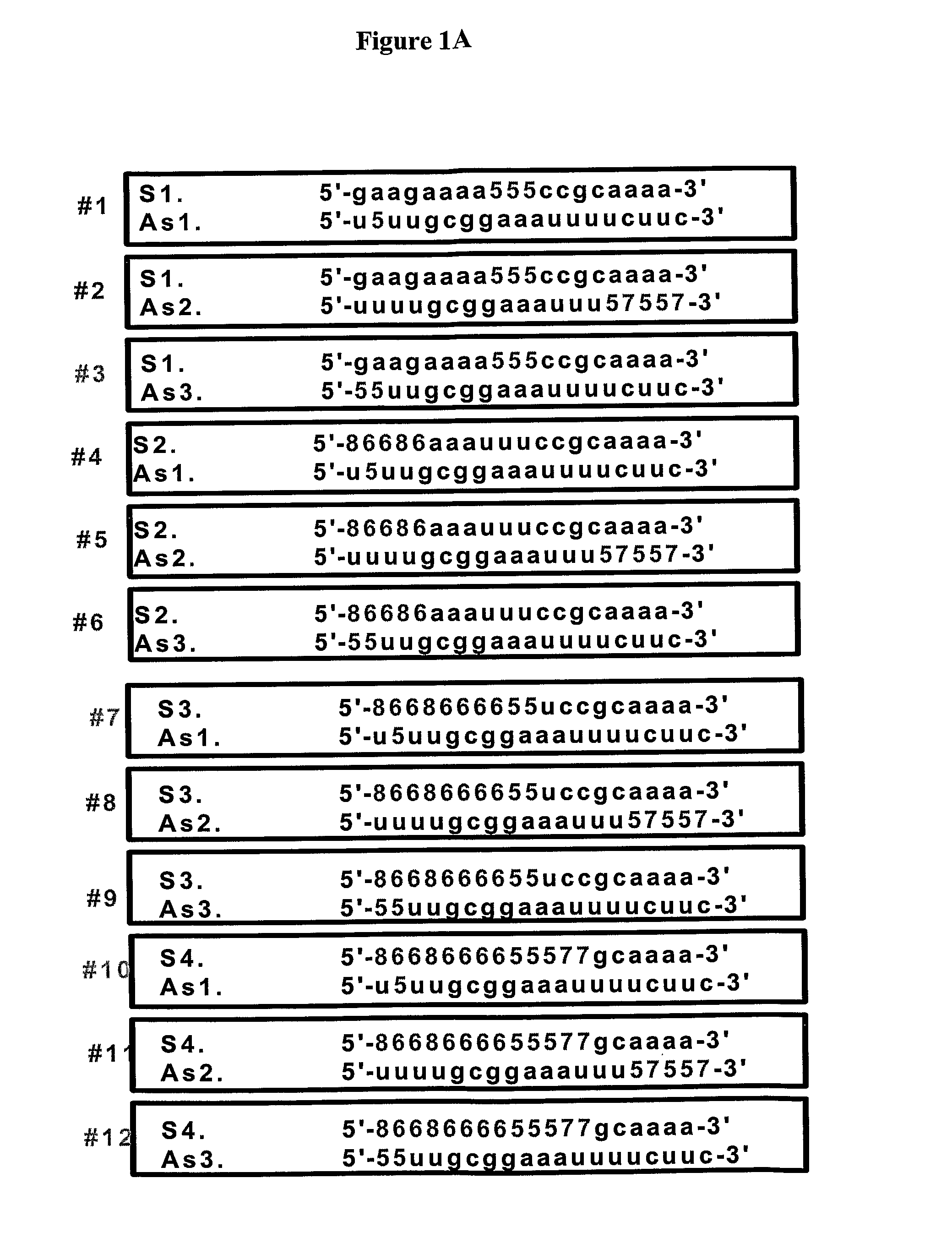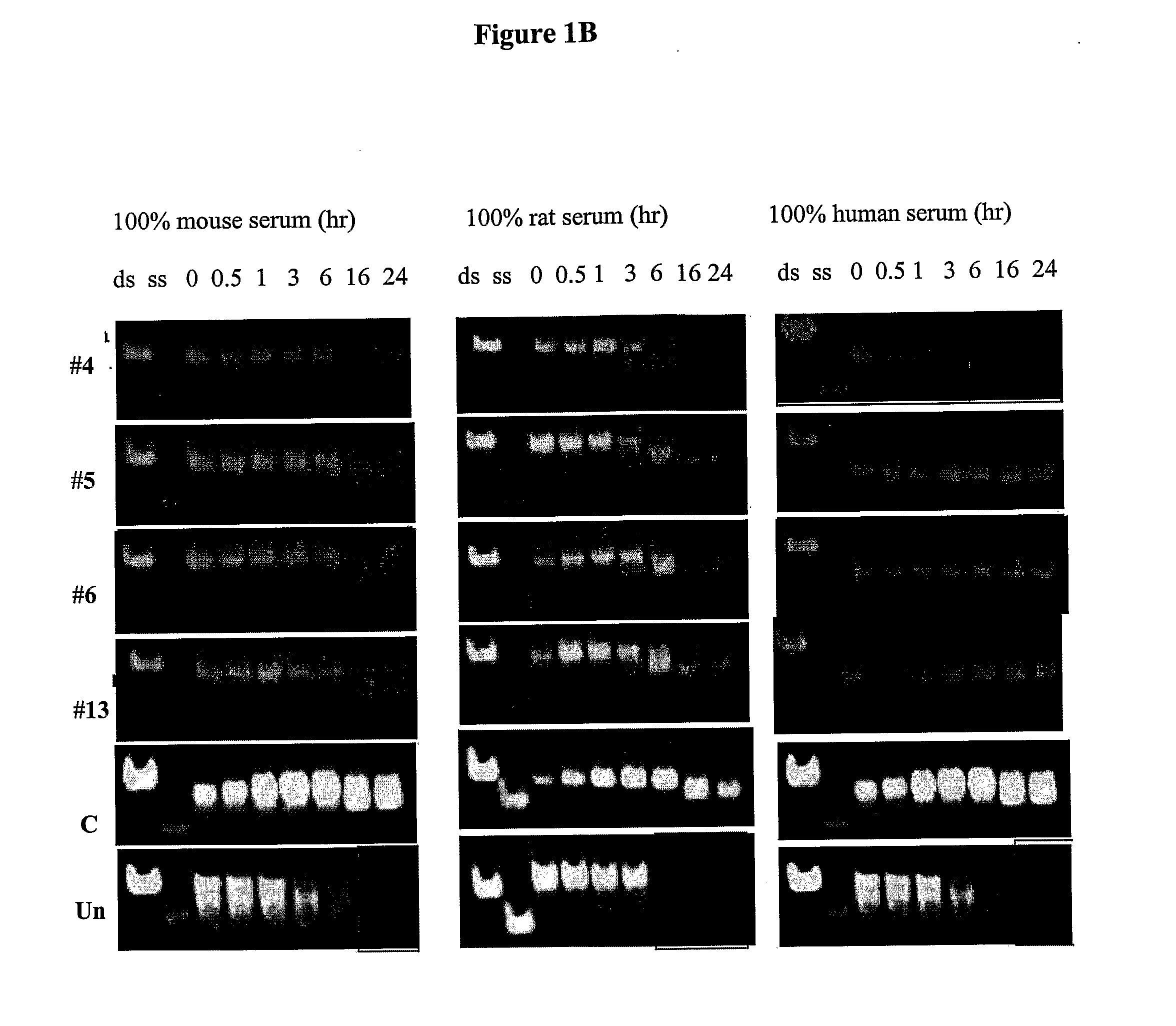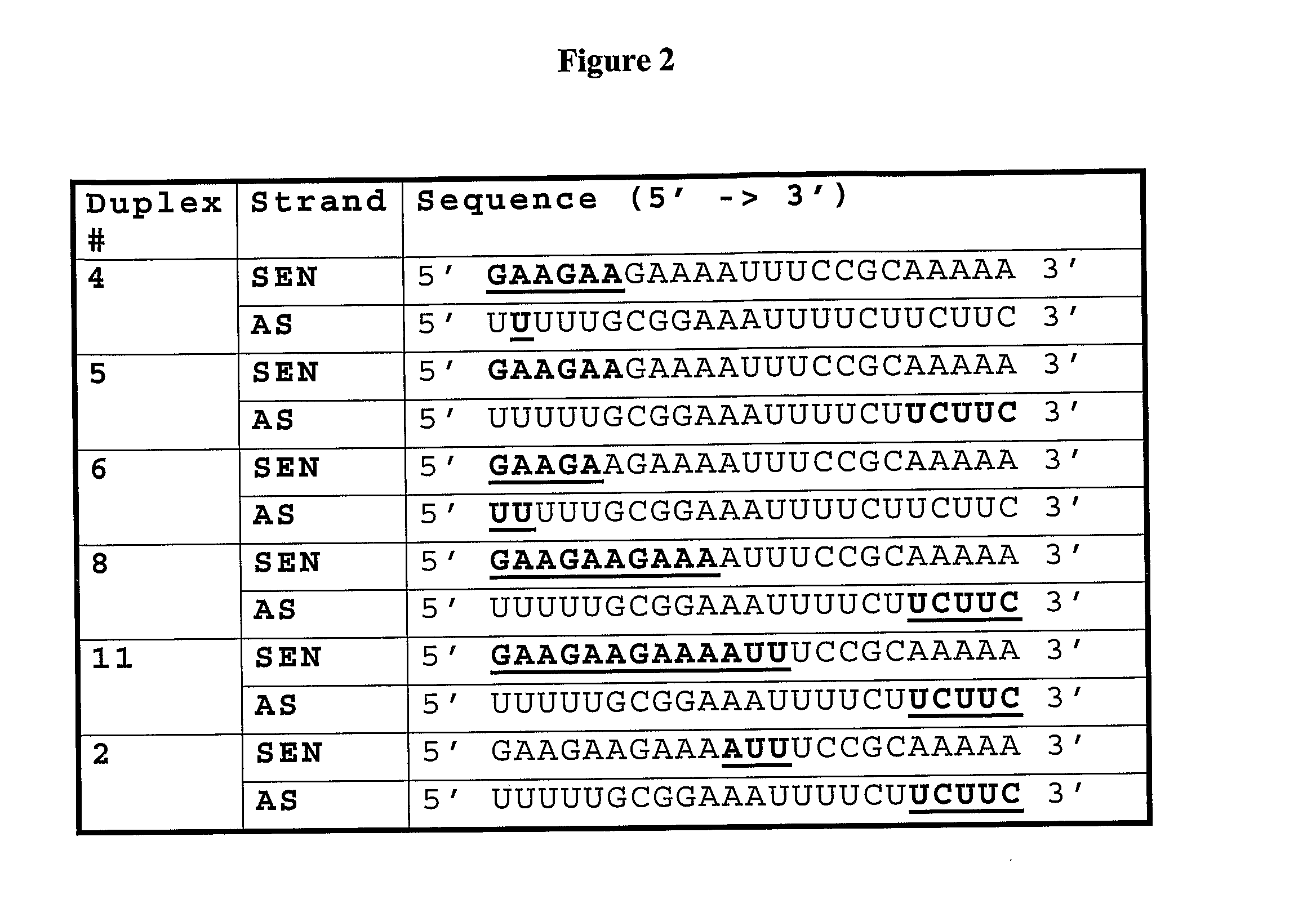Novel sirna structures
a sirna and structure technology, applied in the field of new compounds, can solve the problems of reducing the value of the therapeutic agent, limiting the therapeutic value, and ototoxicity is a recognized dose-limiting side-effect, and achieves the effects of inhibiting human gene expression, preventing ototoxicity, and preventing ototoxicity
- Summary
- Abstract
- Description
- Claims
- Application Information
AI Technical Summary
Benefits of technology
Problems solved by technology
Method used
Image
Examples
example 1
In Vitro Testing of siRNA Compounds
[0403]About 1.5-2×105 tested cells (HeLa cells and / or 293T cells for siRNA targeting human genes and NRK52 cells and / or NMUMG cells for siRNA targeting the rat / mouse gene) were seeded per well in 6 wells plate (70-80% confluent).
[0404]24 hour later, cells were transfected with siRNA compounds using the Lipofectamine™ 2000 reagent (Invitrogen) at final concentrations of 5 nM or 20 nM. The cells were incubated at 37° C. in a CO2 incubator for 72 h.
[0405]As positive control for transfection PTEN-Cy3 labeled siRNA compounds were used. An additional positive control used was a blunt-ended 19-mer siRNA, i.e. x=y=19 wherein Z and Z′ are both absent. This siRNA was non-phosphorylated and had alternating ribonucleotides modified at the 2′ position of the sugar residue in both the antisense and the sense strands, wherein the moiety at the 2′ position is methoxy (2′-O-methyl) and wherein the ribonucleotides at the 5′ and 3′ termini of the antisense strand are...
example 2
Model Systems of Acute Renal Failure (ARF)
[0412]ARF is a clinical syndrome characterized by rapid deterioration of renal function that occurs within days. Without being bound by theory the acute kidney injury may be the result of renal ischemia-reperfusion injury such as renal ischemia-reperfusion injury in patients undergoing major surgery such as major cardiac surgery. The principal feature of ARF is an abrupt decline in glomerular filtration rate (GFR), resulting in the retention of nitrogenous wastes (urea, creatinine). Recent studies, support that apoptosis in renal tissues is prominent in most human cases of ARF. The principal site of apoptotic cell death is the distal nephron. During the initial phase of ischemic injury, loss of integrity of the actin cytoskeleton leads to flattening of the epithelium, with loss of the brush border, loss of focal cell contacts, and subsequent disengagement of the cell from the underlying substratum.
[0413]Testing an active siRNA compound was p...
example 3
Model Systems of Pressure Sores or Pressure Ulcers
[0417]Pressure sores or pressure ulcers including diabetic ulcers, are areas of damaged skin and tissue that develop when sustained pressure (usually from a bed or wheelchair) cuts off circulation to vulnerable parts of the body, especially the skin on the buttocks, hips and heels. The lack of adequate blood flow leads to ischemic necrosis and ulceration of the affected tissue. Pressure sores occur most often in patients with diminished or absent sensation or who are debilitated, emaciated, paralyzed, or long bedridden. Tissues over the sacrum, ischia, greater trochanters, external malleoli, and heels are especially susceptible; other sites may be involved depending on the patient's situation.
[0418]Testing the active inhibitors of the invention (such as siRNA compounds) for treating pressure sore, ulcers and similar wounds is performed in the mouse model as described in Reid et al., J. Surg. Res. 116:172-180, 2004.
[0419]An additional...
PUM
| Property | Measurement | Unit |
|---|---|---|
| volume | aaaaa | aaaaa |
| concentration | aaaaa | aaaaa |
| structure | aaaaa | aaaaa |
Abstract
Description
Claims
Application Information
 Login to View More
Login to View More - R&D
- Intellectual Property
- Life Sciences
- Materials
- Tech Scout
- Unparalleled Data Quality
- Higher Quality Content
- 60% Fewer Hallucinations
Browse by: Latest US Patents, China's latest patents, Technical Efficacy Thesaurus, Application Domain, Technology Topic, Popular Technical Reports.
© 2025 PatSnap. All rights reserved.Legal|Privacy policy|Modern Slavery Act Transparency Statement|Sitemap|About US| Contact US: help@patsnap.com



